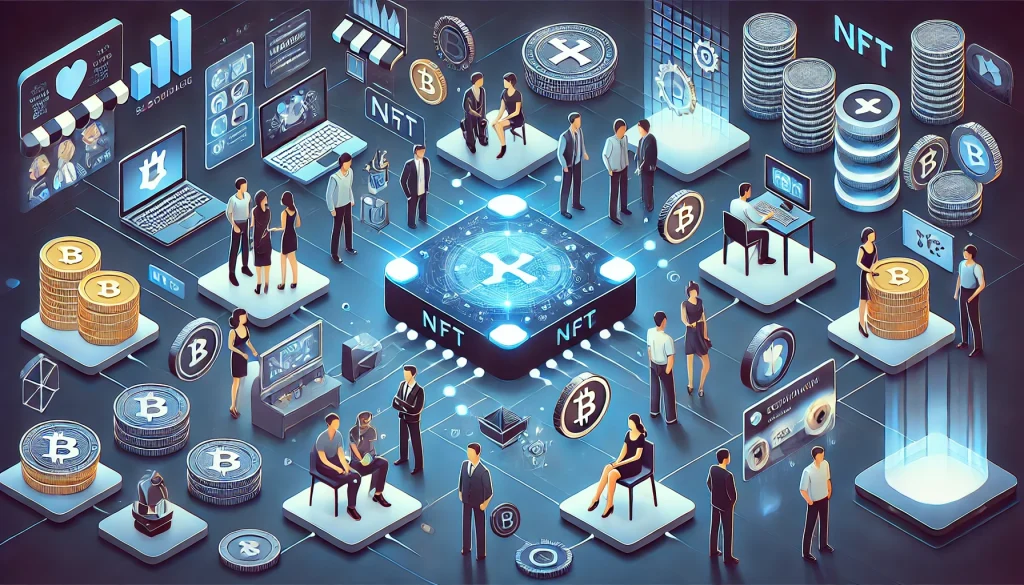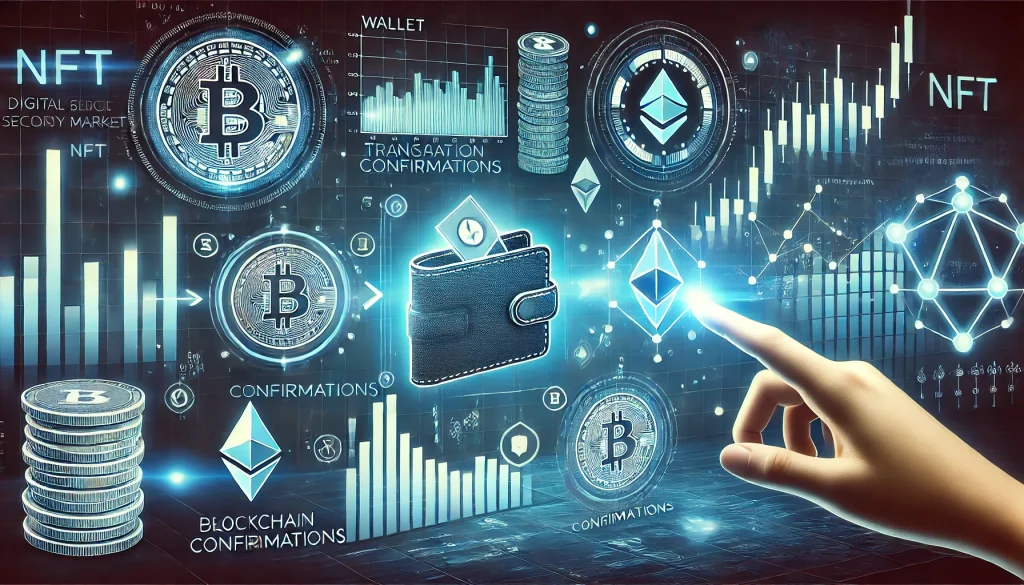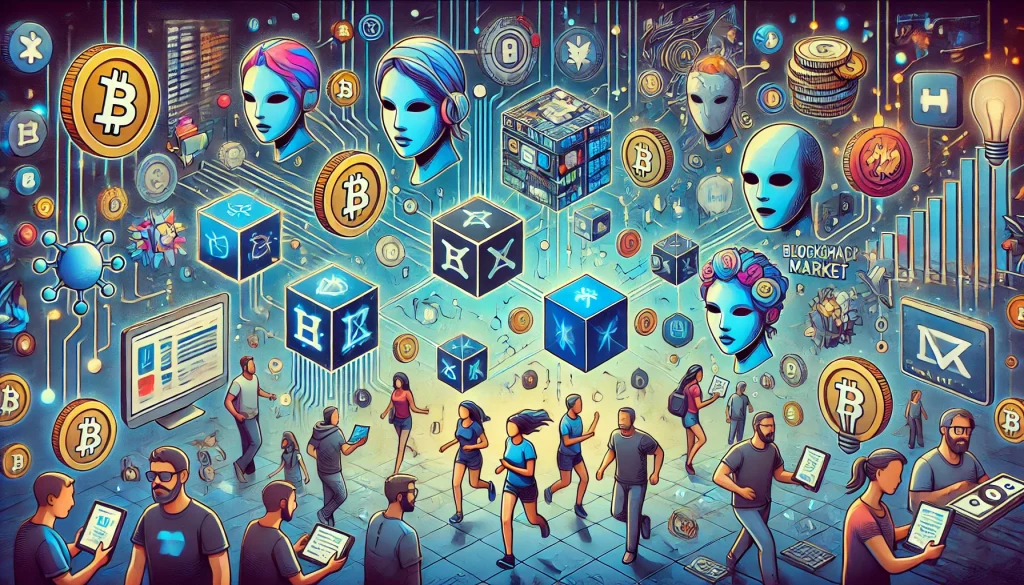
The secondary market in NFTs has evolved rapidly, especially in the ever-changing landscape of cryptocurrency and blockchain technology. October 2024 marks a period of significant updates, making it essential for investors, collectors, and creators to stay informed. As NFTs (non-fungible tokens) gain more traction in the digital world, the secondary market becomes an indispensable platform for buying, selling, and trading these digital assets.
This month has seen noteworthy trends, such as increased trading volumes, new collections, and innovative platforms entering the marketplace. Understanding these shifts will provide insight into how NFTs generate income and how the secondary market adds value to this digital ecosystem. Transitioning into this space offers vast potential for both seasoned traders and newcomers alike.
What’s New in October 2024?
This month has brought a wave of updates and innovations within the NFT space. Notably, Pianity, a music-based NFT platform, recently expanded its secondary market, allowing more freedom for users to trade exclusive music NFTs. According to Pianity’s recent update, their secondary market allows for increased liquidity, enabling artists to capitalize on the resale value of their NFTs while simultaneously providing opportunities for collectors to profit.
Another development involves luxury brands stepping into the secondary NFT market. Absolut Vodka, in partnership with OpenSea, launched their exclusive Born to Mix3D NFT collection. This collaboration has created an interesting dynamic in the marketplace, as collectors have the opportunity to buy and trade these unique digital collectibles within the secondary market. The success of this launch indicates how brands are increasingly using NFTs to engage their audiences while generating additional streams of revenue.
Additionally, data from Blockworks reveals that secondary market NFT trading volumes have significantly increased over the past few months. The platform reports a surge in activity on marketplaces like OpenSea and Blur, with popular NFT collections, such as CryptoPunks and Bored Ape Yacht Club, continuing to drive significant sales in secondary trades. The data suggests that the average resale value of these high-demand NFTs has risen, reflecting broader market confidence in the longevity and value of these digital assets.
| NFT Collection | Initial Price | Current Resale Price | Resale Growth |
|---|---|---|---|
| Bored Ape Yacht Club | 0.08 ETH | 50 ETH | +62,400% |
| CryptoPunks | 0.02 ETH | 55 ETH | +274,900% |
| Born to Mix3D Collection | 0.1 ETH | 2 ETH | +1,900% |
Understanding Secondary Market Dynamics

The secondary market in NFTs functions similarly to traditional financial markets where resales determine asset value. After an NFT is minted and sold on the primary market, it can then be traded or resold on secondary platforms. This creates a dynamic pricing environment where demand plays a significant role in determining the price of each NFT. For instance, rare or limited-edition NFTs often fetch higher prices in the secondary market, making it an attractive option for collectors looking to secure unique assets.
Moreover, the secondary market provides a continuous stream of income for creators. Many NFT platforms allow artists to receive royalties every time their NFT is resold. This system incentivizes creators to produce high-quality, desirable NFTs that will continue to generate income over time. Platforms like OpenSea and Pianity have been instrumental in fostering this ecosystem, allowing both creators and investors to benefit from the trading of NFTs in the secondary market.
Factors Influencing the Growth of the NFT Secondary Market

The surge in the NFT secondary market can be attributed to several key factors:
1. Increased Institutional Interest
In 2024, institutional investors have begun exploring the NFT space, particularly in art and entertainment. These players bring liquidity to the secondary market, driving prices higher and attracting more traders.
2. Rising Popularity of Digital Art
Digital artists, including both well-established creators and up-and-coming talent, have found NFTs to be a valuable medium for showcasing their work. The demand for digital art has continued to grow, particularly for pieces that offer interactive or augmented reality (AR) components.
3. Royalties and Creator Incentives
The promise of receiving royalties from every secondary sale has incentivized more creators to enter the space. Platforms that ensure these royalties are automatically distributed every time an NFT is resold add an additional layer of appeal.
4. New Marketplaces
The emergence of new NFT marketplaces catering to niche audiences has expanded the reach of the secondary market. Whether it’s a focus on music, fashion, or gaming, these platforms allow for more specialized trading opportunities.
5. Fractionalization
Another trend that has gained momentum in 2024 is the fractional ownership of NFTs. This allows multiple investors to own a portion of a highly valued NFT, reducing the barriers to entry for smaller investors and further fueling growth in the secondary market.
As the NFT marketplace continues to mature, the secondary market plays an increasingly vital role in the ecosystem. Whether through large-scale platforms like OpenSea or more niche environments like Pianity, traders have more options than ever before to engage with the world of NFTs. This allows them to diversify their portfolios and tap into new sources of income.
Conclusion
The secondary market in NFTs represents a growing frontier for both investors and creators alike. With October 2024 bringing several new developments, such as the launch of new collections and an increase in trading volumes, this sector is poised for even greater growth. Whether you’re a collector looking to buy into a new digital trend or an artist seeking additional income streams, the secondary market provides significant opportunities.
As the landscape continues to evolve, staying informed about new updates, technological innovations, and shifts in market dynamics will be key to success. The increasing integration of NFTs into different industries—from fashion and luxury goods to gaming and music—shows that this is no fleeting trend. In fact, it’s a digital asset class with the potential for long-term value creation.
Encouragingly, the opportunities for both creators and traders within the secondary NFT market are more diverse than ever. With platforms providing innovative tools, trading mechanisms, and guaranteed royalties, those engaged in the market can expect continued growth, development, and, importantly, profits.
Key Takeaways
- The secondary NFT market allows for the resale of digital assets, providing income streams for both creators and traders.
- October 2024 has seen increased trading volumes, driven by high-demand collections and new marketplace innovations.
- Royalties from secondary sales continue to incentivize creators, fueling further interest and investment in NFTs.
Resources
- Pianity Helpdesk. What is the secondary market and how does it work?
- Blockworks. Data Shows Growing Secondary NFT Market.
- Absolut. Born to Mix3D NFT Collection on OpenSea.
- SpringerLink. NFT Marketplace Growth in 2024.
